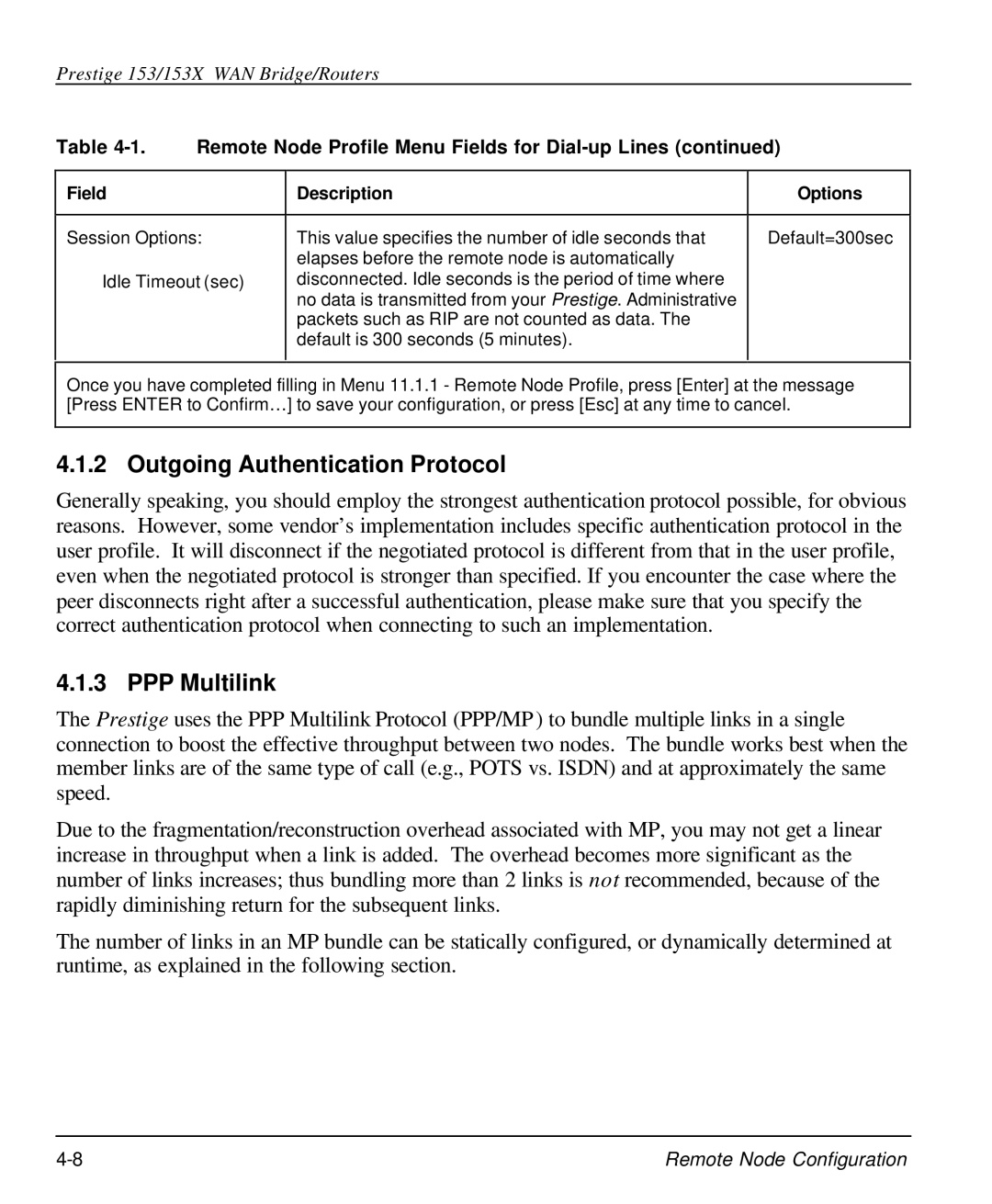
Prestige 153/153X WAN Bridge/Routers
Table 4-1. Remote Node Profile Menu Fields for Dial-up Lines (continued)
Field | Description | Options |
|
|
|
Session Options: | This value specifies the number of idle seconds that | Default=300sec |
| elapses before the remote node is automatically |
|
Idle Timeout (sec) | disconnected. Idle seconds is the period of time where |
|
| no data is transmitted from your Prestige. Administrative |
|
| packets such as RIP are not counted as data. The |
|
| default is 300 seconds (5 minutes). |
|
|
|
|
Once you have completed filling in Menu 11.1.1 - Remote Node Profile, press [Enter] at the message [Press ENTER to Confirm…] to save your configuration, or press [Esc] at any time to cancel.
4.1.2 Outgoing Authentication Protocol
Generally speaking, you should employ the strongest authentication protocol possible, for obvious reasons. However, some vendor’s implementation includes specific authentication protocol in the user profile. It will disconnect if the negotiated protocol is different from that in the user profile, even when the negotiated protocol is stronger than specified. If you encounter the case where the peer disconnects right after a successful authentication, please make sure that you specify the correct authentication protocol when connecting to such an implementation.
4.1.3 PPP Multilink
The Prestige uses the PPP Multilink Protocol (PPP/MP ) to bundle multiple links in a single connection to boost the effective throughput between two nodes. The bundle works best when the member links are of the same type of call (e.g., POTS vs. ISDN) and at approximately the same speed.
Due to the fragmentation/reconstruction overhead associated with MP, you may not get a linear increase in throughput when a link is added. The overhead becomes more significant as the number of links increases; thus bundling more than 2 links is not recommended, because of the rapidly diminishing return for the subsequent links.
The number of links in an MP bundle can be statically configured, or dynamically determined at runtime, as explained in the following section.
Remote Node Configuration |
